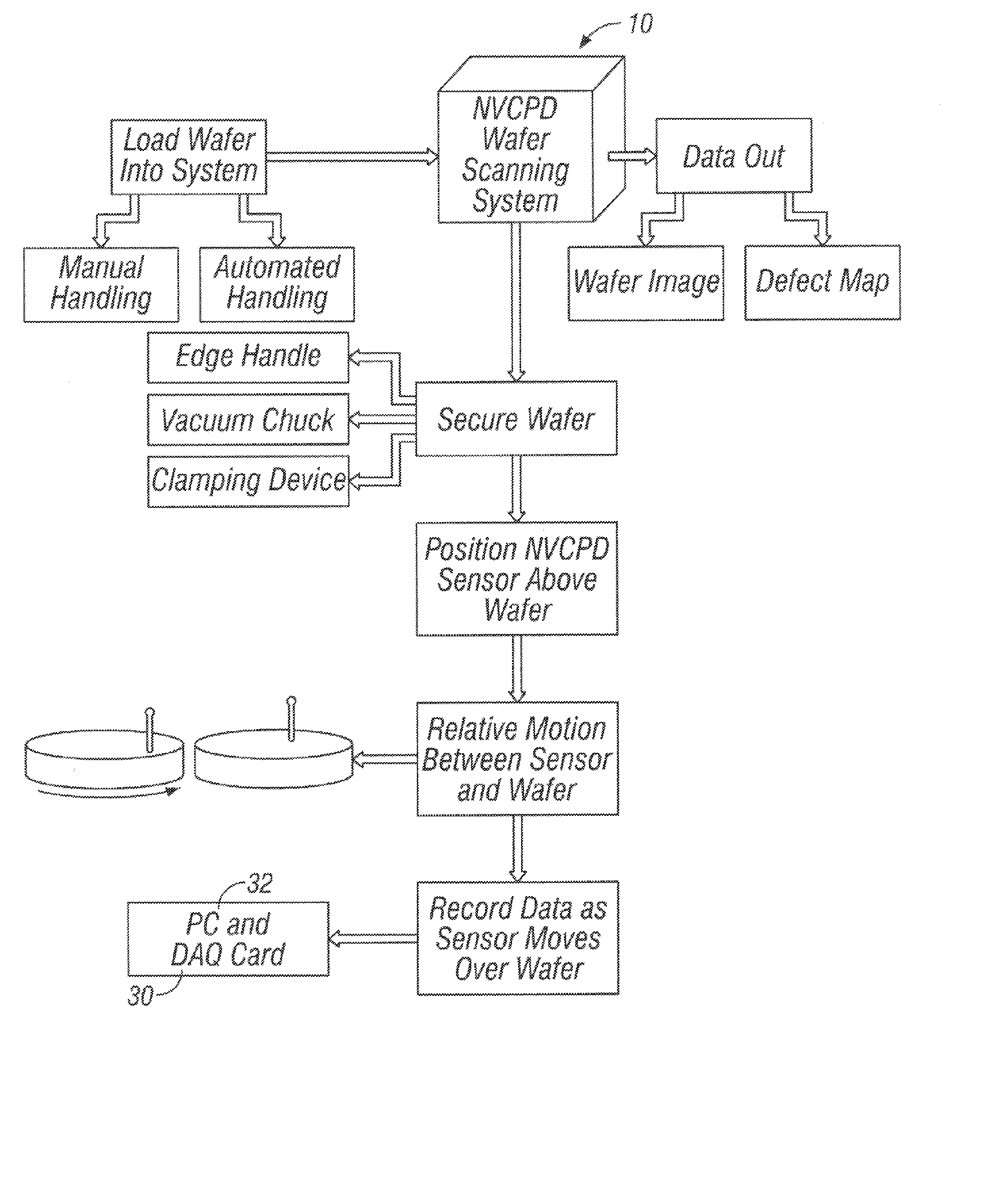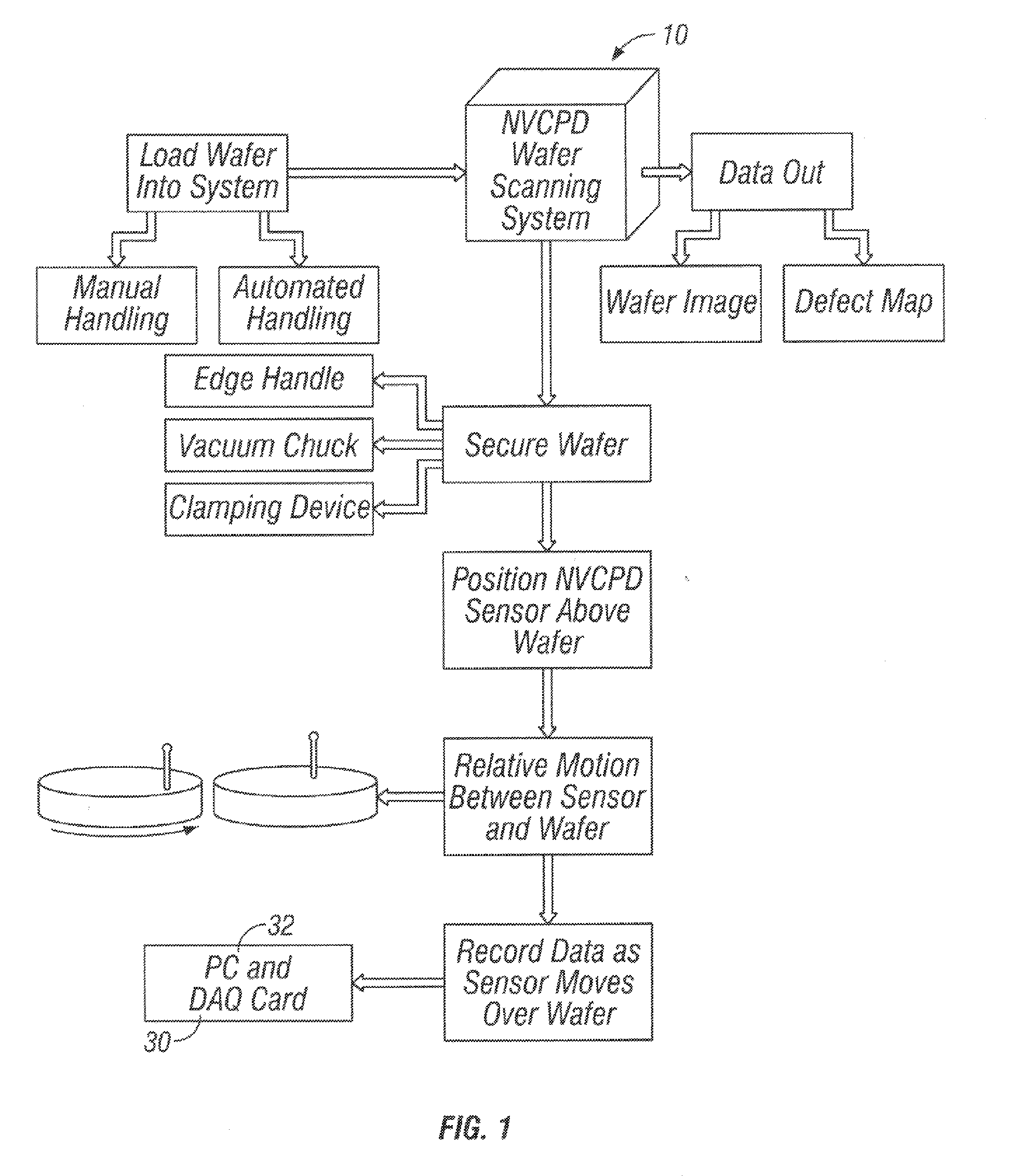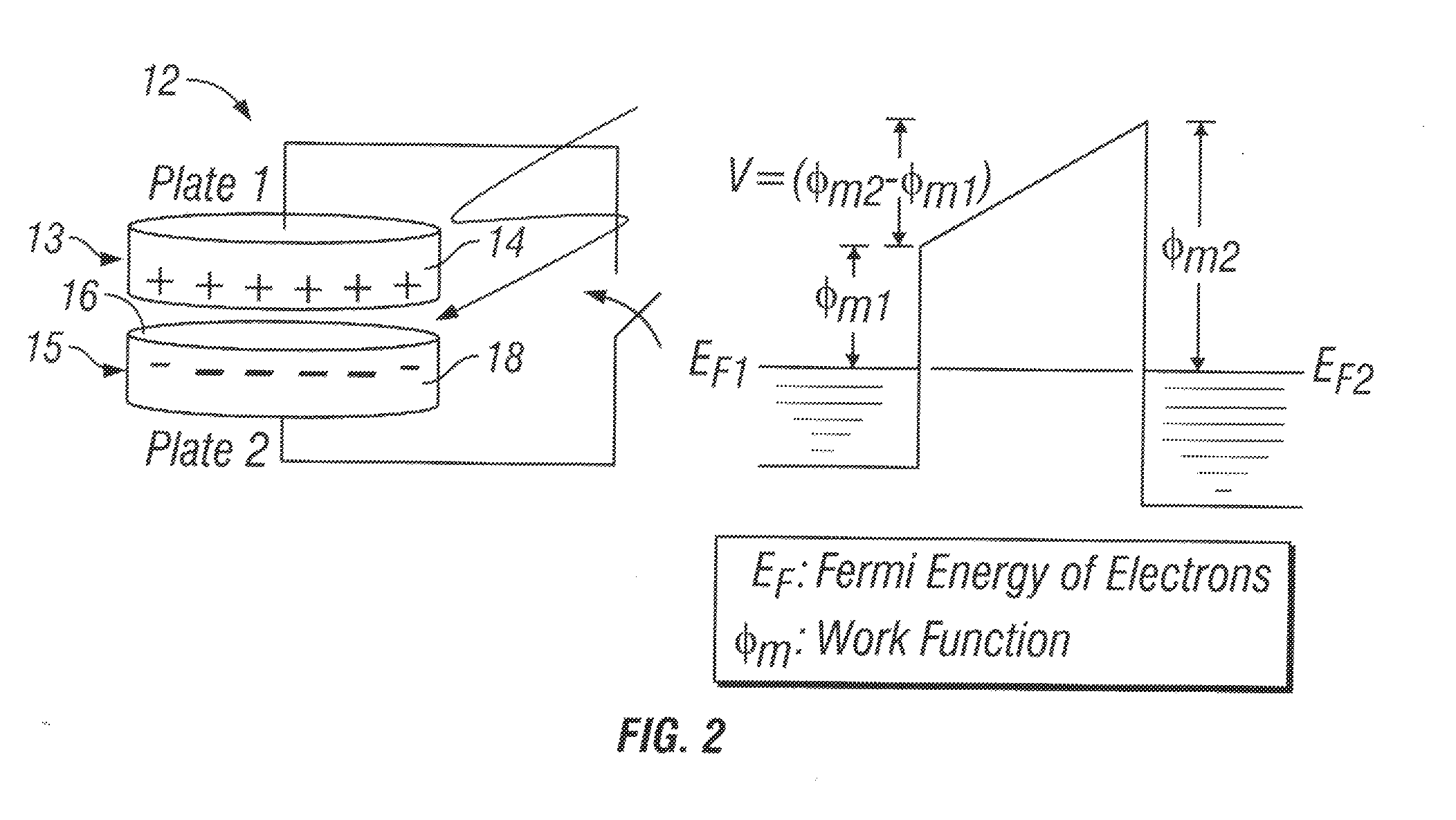Inspection system and apparatus
a technology of inspection system and apparatus, applied in semiconductor/solid-state device testing/measurement, mechanical roughness/irregularity measurement, instruments, etc., can solve problems such as poor handling technique, improper processing, and use of processing chemicals, so as to reduce improve signal processing. , the effect of reducing the complexity of the sensor control mechanism
- Summary
- Abstract
- Description
- Claims
- Application Information
AI Technical Summary
Benefits of technology
Problems solved by technology
Method used
Image
Examples
example
Sample wafers can be created by dip coating the wafer 15 in solutions that contain known concentrations of contaminants. Part of this example describes metal contaminants such as Cu and Fe, although any manner of chemical contaminants can be evaluated in this way. The wafer 15 described is either a 100 mm or 150 mm wafer, although these examples apply to any size wafer. The wafer surface 16 is prepared by dipping in HF to remove oxides. The wafer 15 is then cleaned and partially dipped in the metal contaminant solution. The amount of solution remaining on the wafer 15, and the resulting concentration of contaminant on the wafer surface 16, is controlled by selecting dip coating parameters such as the extraction rate.
Partial dipping of the test wafer 15 is preferred to create a transition from clean to contaminated areas. Because the nvCPD signal is differential, the nvCPD sensor 12 detects changes on the wafer surface 16, as opposed to an absolute value relating to surface condit...
PUM
| Property | Measurement | Unit |
|---|---|---|
| Density | aaaaa | aaaaa |
| Radius | aaaaa | aaaaa |
| Electric potential / voltage | aaaaa | aaaaa |
Abstract
Description
Claims
Application Information
 Login to View More
Login to View More - R&D
- Intellectual Property
- Life Sciences
- Materials
- Tech Scout
- Unparalleled Data Quality
- Higher Quality Content
- 60% Fewer Hallucinations
Browse by: Latest US Patents, China's latest patents, Technical Efficacy Thesaurus, Application Domain, Technology Topic, Popular Technical Reports.
© 2025 PatSnap. All rights reserved.Legal|Privacy policy|Modern Slavery Act Transparency Statement|Sitemap|About US| Contact US: help@patsnap.com



